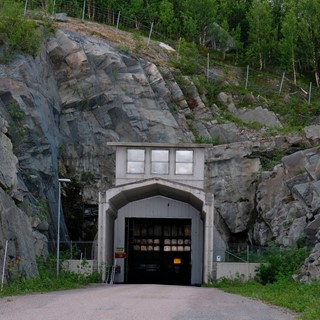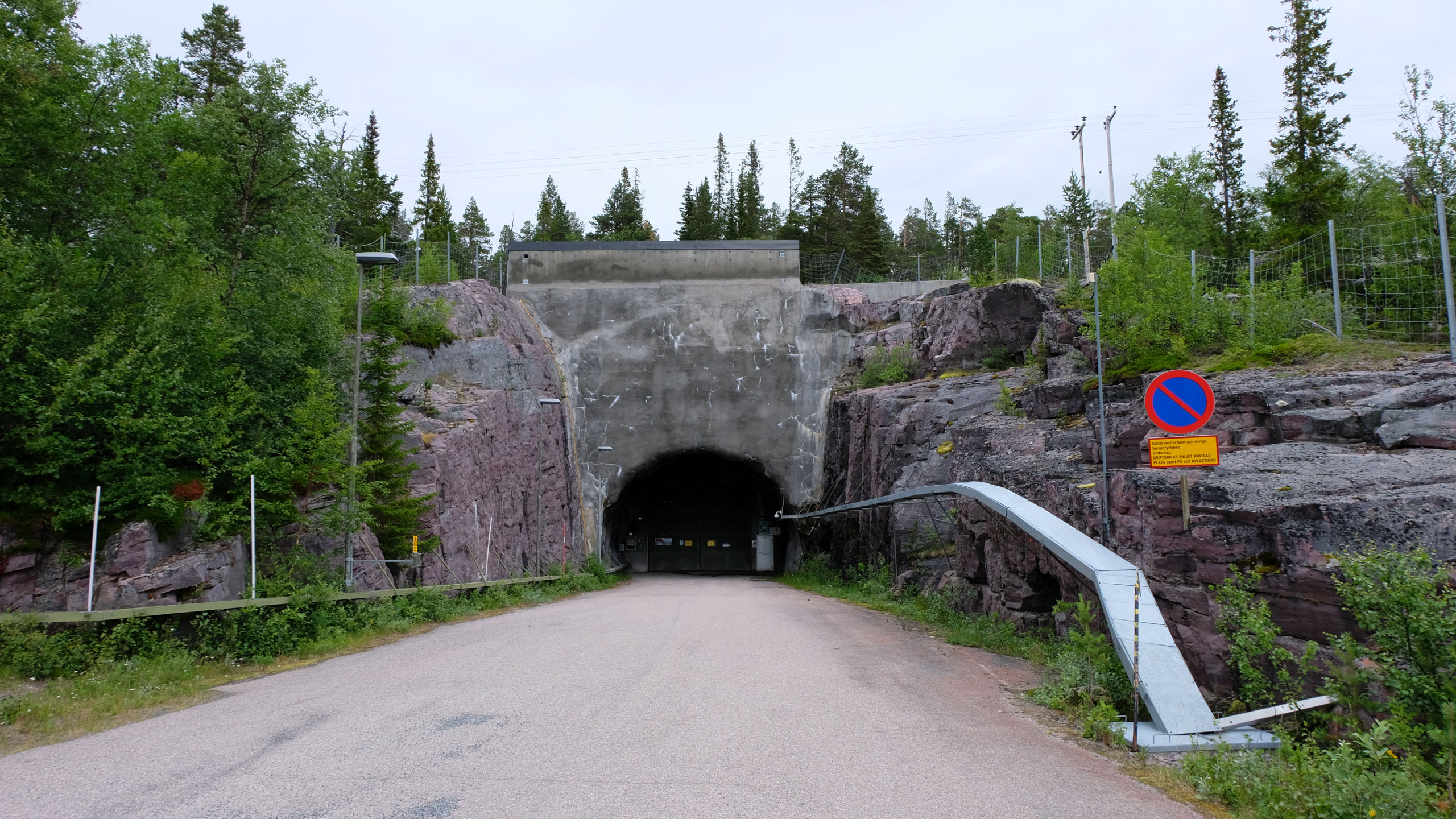History
The hydropower plant in Ritsem is the northernmost in the River Luleälven, and probably Sweden’s last power plant construction in the wilderness. Work on the power plant started in 1971, and was completed in 1978. Construction was extensive, and the 16.3-kilometre tunnel that was excavated from Sitasjaure to the power plant was, at the time, the biggest excavation project in Sweden, with 2.5 million m3 of excavated rock. The tunnel is now the longest hydropower tunnel in the country with its eleven by eleven metres. At its deepest, the tunnel goes under Mount Kätjåive at 300 metres deep.
Apart from the power plant, power lines for the transfer of power between Ritsem and Vietas, and over to Norway, were also built. The terrain was difficult, and the area’s status as a national park meant that a lot of work had to be done from the air, by helicopter. In connection with this work, one helicopter crashed in 1979, and five of six passengers died. The accident was Vattenfall’s most serious in connection with power line work.
Those who lived in Vattenfall’s construction villages rarely established any deeper contacts, probably because they didn’t have much of a private life in general. It can also be explained by the temporary lives they led, as they knew that they would soon part ways. What was different about construction in Ritsem was that people would most likely not meet again at the next construction, as this was one of the last ones built in Luleå’s river valley. Office staff often suffered more with the rootless and provisional lifestyle than the workers which was often due to the community between the groups in the village. The workers had to work together again and again to build their homes, look after children, and socialise, whereas the office staff moved into ready-made houses with their families.
The number of employees varied at the site, but at most, 500 staff were employed in Ritsem. Even though it was the 1970s, the workers had to share rooms, while the office staff had their own. Vattenfall was criticised for the low living standards, and during a three-week period, 300 men went on strike. As for wages for workers, there was nothing out of the ordinary; a truck driver got around 4,000 SEK in the 1970s, today’s equivalent is about 26,000 SEK.
The construction area at Ritsem was about 20 kilometres, which led to the establishment of two residential areas; one in Ritsem, and one in Autajaure. 470 people lived in Ritsem in 1977, and Autajaure was home to 124 people. The residential areas in Ritsem were mainly intended for single persons, and thus became a central village that comprised 12 provisional family homes, a canteen with room for about 100 guests, plus a canteen annex with 40 single rooms.
The homes in the temporary buildings were often likened to prisons, ratholes or shoe boxes. Many people who lived there tell stories of how hard it was to receive visitors at Ritsem. At weekends, most workers went home to visit their families. Many lived in Porjus, and some further away still.
Those who lived in temporary accommodation in Ritsem didn’t see time when they didn’t work as leisure time. Many worked overtime, and saw weekends and holidays as leisure time. There were opportunities for leisure activities in Ritsem, however. You could visit a plastic tent where you could play table tennis and badminton, and do strength training. Among the clubs in Ritsem were the sports club, the shooting club, the photography club, the motor and snow scooter club, and the dance club. In spite of all the clubs, participation wasn’t high. One of the reasons for this was a sense of rootlessness; people didn’t think it was worth starting a new activity as their time there was often so brief.
Images
All pictures below are part of the power plant's history. All images are copyrighted. You may use the images for personal use but the images may not be used in commercial contexts or printed matter without our permission. Click on the pictures to enlarge them.
Stories
Here you can read other people's stories about the power plant. And if you have your own story, please share it. Whether you want it to be published on the site or not, we are interested in all stories.
Do you have a story about the powerplant or life around the river?
Send us your story
Visitor information
Below you can read about everything you need to know before a possible visit to the power plant. When it is best to visit the power plant, how to find here and about the rules that apply in the area.


